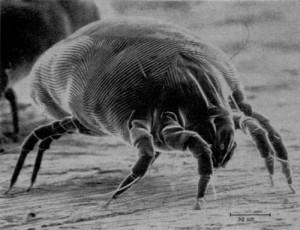Living with allergies can be tough. Around this time of year especially, there seems to be no shortage of elements that trigger the stuffy noses, itchy eyes and congestion.
A common misconception is that all the allergy dangers lie outside of the home. The truth is there are a number of things inside the home that can cause those reactions as well. Here are some ways you can control home allergens.
Be Careful What You Bring Inside

During pollen season, it is practically impossible to sleep outside and not get a small layer of it on you and your clothes, even if you can’t see it with the naked eye. You only have to look around at all the pollen-covered vehicles to get an idea of how much of it is in the air.
This is why it is so important, especially during allergy season, to limit the areas of your home that you spend time in while wearing the clothes you wore outside. By sitting on the couch, the edge of the bed, etc., you’re essentially transferring the pollen to those areas. So, even when you change out of those clothes and clean up, you’re still rolling around in the allergy-causing pollen, which can make life miserable for the next month or so.
During the height of allergy season, try to leave outerwear in a hall closet and try to take clothes directly to the laundry room as opposed to wearing them throughout the house.
It’s More Than the Plants Outside

While allergy seasons caused by trees, grasses and weeds outside occur during the fall and spring seasons, there are a number of things that can trigger allergies all year long. A common, and misery-inducing misconception is that houseplants don’t trigger allergies.
However, there are many indoor houseplants that have extremely high pollen counts. If you suffer from seasonal allergies, consider these indoor houseplants that have a low pollen count:
- begonias
- peace lillies
- swedish ivy
- passion flowers
- miniatureroses
- peporomias
- nasturtiums
Allergies Specific to You
If you suffer from intense or frequent allergic reactions, consider getting allergy testing done if you haven’t already. This testing will expose you to a number of common allergens and, based on your body’s reaction, will let you know specific things you need to look out for and avoid.
Common allergens include molds, pet dander, dust mites, cockroaches, mice, latex, air pollutants and food allergies. These things affect individuals with asthma more often.
Cleaner Surfaces and Cleaner Air

Regular dusting and cleaning is the primary way to prevent allergens from affecting you and your family. Dust mites are found in nearly all homes and thrive in warm areas where there is human dander and high humidity.
common areas where they’re found include carpeting, mattresses, linens, pillows and upholstery. Depending upon how badly you and your family reacts to dust mites, it may be worth replacing carpet with hardwood or tile floors and using a humidifier to keep the humidity between 30 to 50 percent.
Allergen-proof bedding, along with washing linens and children’s stuffed animals on a weekly basis can help control dust mites. Also, use a HEPA (high-efficiency particulate air) filters in vacuums and high-quality air filters in the home.
—
Between the pollen outside and the allergens looking in our home, there seems to be no escaping them. Armed with these tips, however, you may be able to find some relief during this allergy season.

